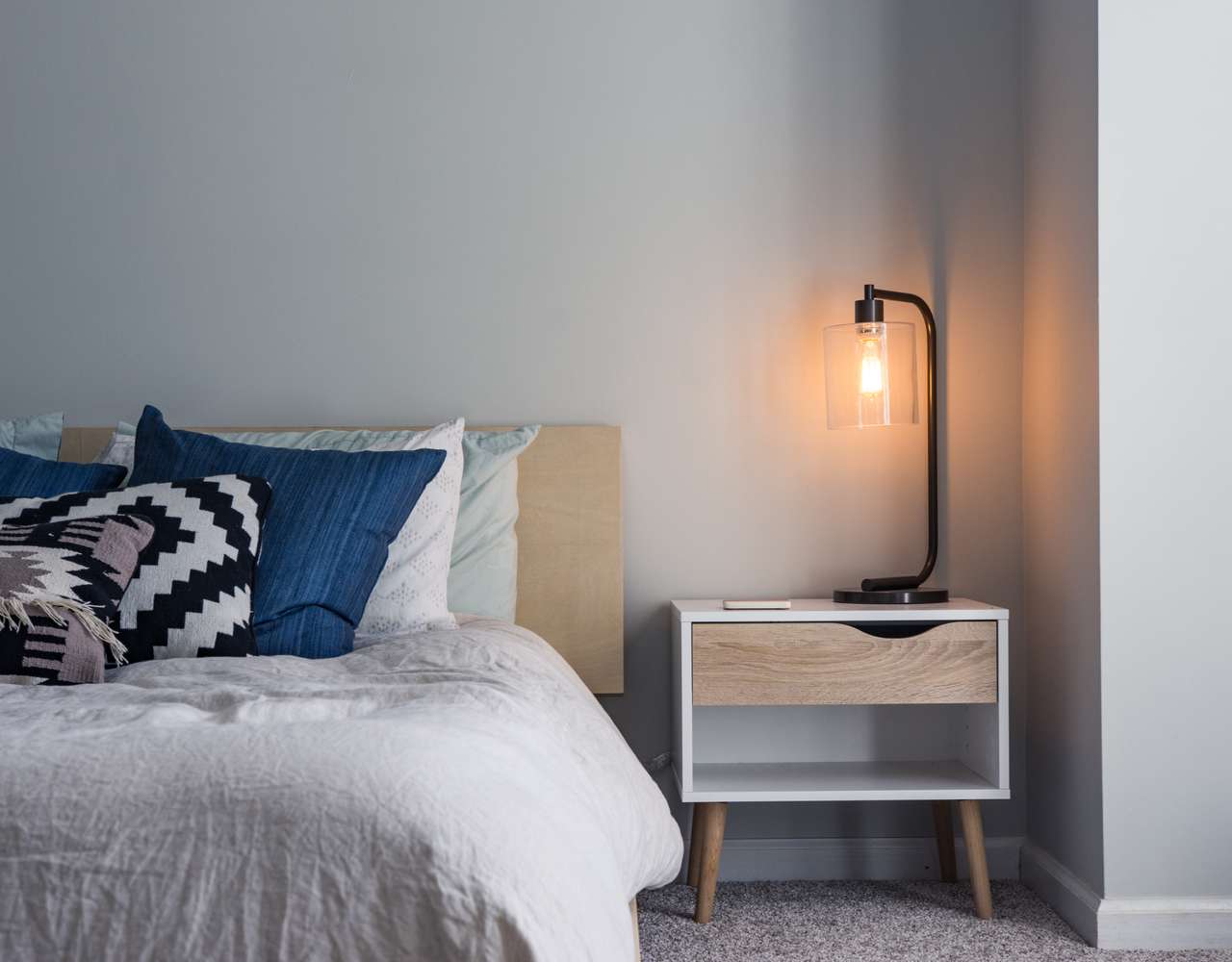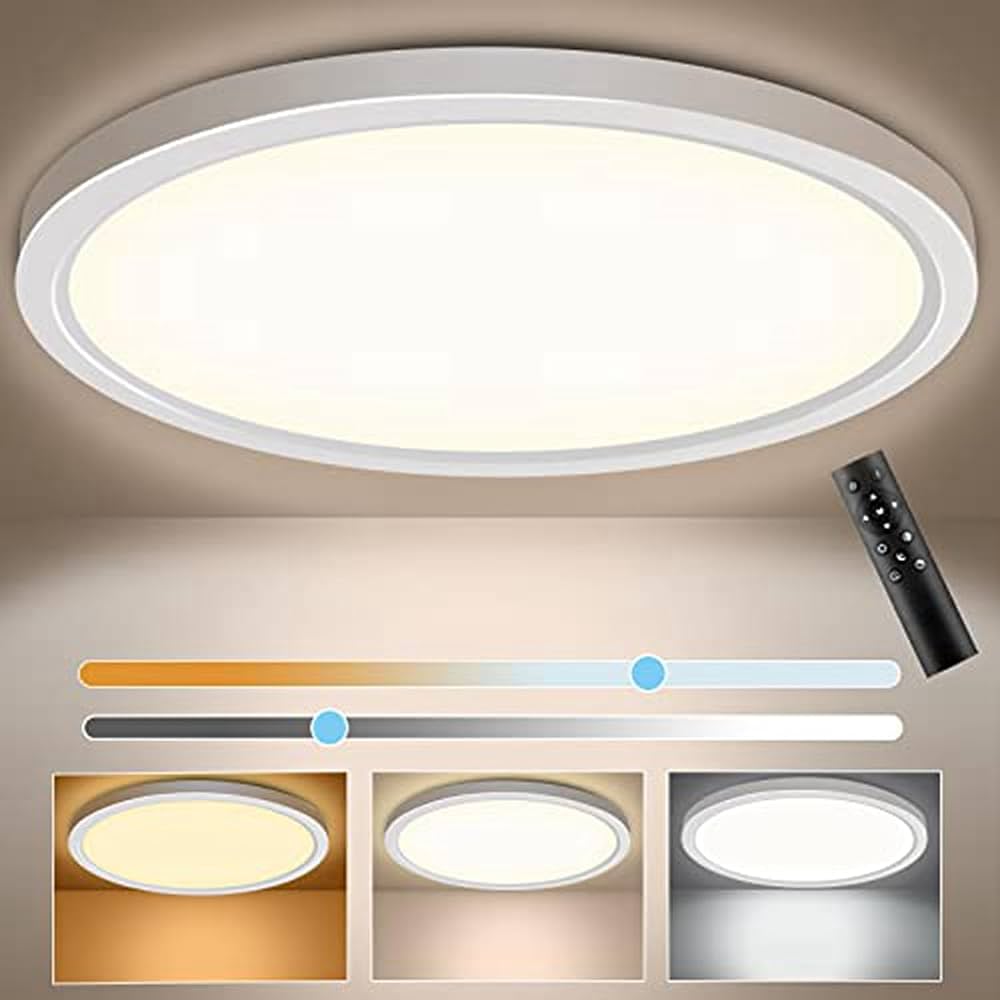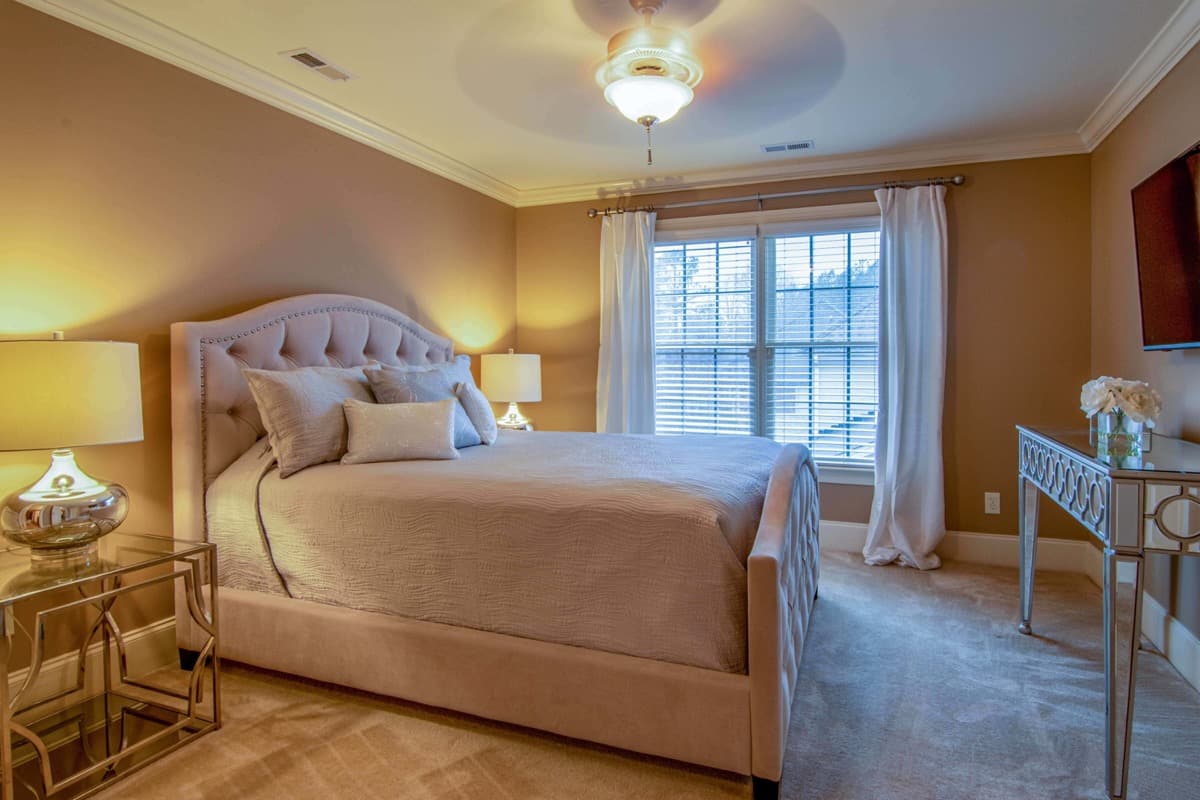Sleep is a fundamental aspect of human life, one that plays a pivotal role in maintaining our physical, mental, and emotional well-being. Beyond its seemingly passive nature, sleep is a complex physiological process that is essential for a healthy and balanced life. In this article, we delve into the significance of sleep and its profound impact on our overall well-being.
The Importance of Sleep:
Sleep is often referred to as the body’s natural reset button. It is during this restorative phase that our bodies undergo a multitude of essential processes that contribute to our health. From cellular repair and immune system strengthening to memory consolidation and emotional regulation, sleep is a comprehensive mechanism that keeps our bodies and minds functioning optimally.
Physical Restoration:
During sleep, our bodies engage in repair and maintenance activities that are crucial for physical health. Tissues and muscles are repaired, and the body’s energy stores are replenished. This renewal process aids in preventing various health issues, including cardiovascular diseases, obesity, and diabetes. Additionally, sleep supports the regulation of hormones that control appetite and metabolism, underscoring its role in weight management.
Cognitive Function and Memory:
Sleep is intimately connected with cognitive function and memory consolidation. While we sleep, the brain processes and organizes information gathered throughout the day, transferring it from short-term to long-term memory. This process is essential for learning and skill development. Lack of sufficient sleep can lead to difficulties in concentration, problem-solving, and creativity, hindering our ability to perform at our best.
Emotional Well-being:
A good night’s sleep is closely tied to emotional well-being. Sleep deprivation can lead to heightened emotional reactivity, irritability, and mood swings. The brain’s ability to regulate emotions becomes compromised, making it challenging to manage stress, anxiety, and other negative emotions. Adequate sleep, on the other hand, supports emotional resilience and contributes to a positive outlook on life.
The Sleep-Wake Cycle and Circadian Rhythms:
Understanding the importance of sleep requires an exploration of the intricate relationship between sleep and the body’s internal clock, known as the circadian rhythm. This internal clock governs the sleep-wake cycle and influences various physiological processes. It is regulated by the release of hormones, particularly melatonin, which is triggered by the presence or absence of light.
Impact of Light on Sleep:
The influence of light on our circadian rhythms cannot be overstated. Natural light exposure during the day helps regulate the circadian rhythm, promoting alertness and wakefulness. Conversely, reduced exposure to natural light in the evening signals the body to prepare for sleep. However, the modern lifestyle, characterized by increased screen time and exposure to artificial light sources, can disrupt this natural cycle, leading to difficulties falling asleep and achieving restorative sleep.
This is where color temperature LED lighting comes into play. By mimicking the natural changes in sunlight throughout the day, these lighting solutions can help regulate our circadian rhythms and enhance our sleep quality. The color temperature of light, measured in Kelvin (K), determines the warmth or coolness of the light emitted. Cooler, bluish light in the morning and afternoon promotes alertness and focus, while warmer, reddish light in the evening encourages relaxation and prepares the body for sleep.
In the following sections of this article, we will delve deeper into the science behind color temperature LED lighting and how it can be harnessed to create a sleep-friendly environment. We will explore the benefits of using different color temperatures at various times of the day, and provide practical tips for incorporating these lighting solutions into your daily routine.
In conclusion, recognizing the importance of sleep is essential for maintaining optimal health and well-being. Sleep impacts our physical, cognitive, and emotional functioning, and its relationship with the circadian rhythm highlights the significance of light in regulating our sleep-wake cycles. Color temperature LED lighting offers a promising avenue for improving sleep quality by aligning our indoor lighting environment with the natural patterns of sunlight. As we delve deeper into this topic, we will uncover the ways in which technology can be harnessed to enhance our sleep and ultimately contribute to a healthier, more balanced life.
The Science of Sleep and Light
Understanding the Circadian Rhythm and Light Exposure:
The circadian rhythm is a finely tuned internal clock that regulates our sleep-wake cycle, hormone production, and various physiological processes. It is influenced primarily by our exposure to light, particularly natural sunlight. When light enters our eyes, it triggers the release of neurotransmitters that communicate with the brain’s suprachiasmatic nucleus (SCN), located in the hypothalamus. The SCN serves as the body’s master clock, synchronizing the circadian rhythm with the external environment.
Light exposure, especially during the morning, sends a powerful signal to the brain that it’s time to wake up and be alert. This exposure inhibits the release of melatonin, a hormone that induces sleepiness. As the day progresses and natural light diminishes, melatonin production increases, promoting the onset of sleep.
Color Temperature and Its Effects on Sleep:
Color temperature refers to the appearance of light based on its warmth or coolness. It is measured in Kelvin (K) and is a critical factor in regulating our circadian rhythms and influencing sleep quality. The color of light is closely linked to its spectral composition, with bluish light having a higher color temperature and reddish light having a lower temperature.
Cooler, Bluer Light (Higher Color Temperatures):
- Morning and Daytime Exposure: Cooler, bluer light with higher color temperatures (e.g., 5000K-6500K) is akin to the natural sunlight experienced during mornings and midday. Exposure to this type of light enhances alertness, cognitive function, and mood. It suppresses melatonin production, helping us feel awake and focused during the day.
- Potential Impact on Evening Sleep: While beneficial during the day, exposure to cooler light in the evening can disrupt the body’s natural wind-down process. Prolonged exposure to screens emitting bluish light, common in modern devices, can interfere with the body’s ability to prepare for sleep by delaying the release of melatonin.
Warmer, Redder Light (Lower Color Temperatures):
- Evening and Nighttime Exposure: Warmer, redder light with lower color temperatures (e.g., 2000K-3000K) resembles the hues of sunset and candlelight. This type of light promotes relaxation, melatonin production, and the transition into restful sleep. It supports the body’s natural winding-down process and signals that it’s time to prepare for bed.
- Benefits for Sleep Quality: Exposure to warmer light in the evening helps protect the quality of sleep by allowing the body to synchronize its internal clock with natural light-dark cycles. This alignment fosters more restorative sleep and better overall sleep patterns.
Understanding the delicate balance between different color temperatures and their effects on our circadian rhythms is essential for optimizing our sleep-wake cycles. By harnessing this knowledge, we can make informed decisions about the lighting we expose ourselves to throughout the day, ultimately contributing to improved sleep quality and overall well-being. In the following sections, we’ll explore how color temperature LED lighting can be harnessed to create a sleep-friendly environment and promote healthier sleep habits.
Benefits of Using Color Temperature LED Lighting:
Incorporating color temperature LED lighting into your daily routine offers a range of benefits that extend beyond mere illumination. By strategically adjusting the color temperature of your indoor lighting, you can positively impact your sleep quality and overall well-being.
- Regulated Circadian Rhythms: Color temperature LED lighting provides a unique opportunity to align your indoor environment with the natural progression of sunlight. By simulating the warm tones of morning and evening light, and the cooler tones of midday sunlight, you can help regulate your circadian rhythms. This synchronization encourages a smoother transition between wakefulness and sleep, promoting a more balanced sleep-wake cycle.
- Enhanced Sleep Quality: The ability to transition from cooler, bluer light during the day to warmer, redder light in the evening aids in the body’s production of melatonin. This hormone is essential for initiating and maintaining sleep. By exposing yourself to the right color temperature at the right time, you can enjoy improved sleep quality, better sleep duration, and a more restorative rest.
- Improved Alertness and Productivity: During the daytime, cooler color temperatures emulate the energizing effects of natural sunlight. These tones stimulate alertness, increase focus, and enhance productivity. Incorporating such lighting into your workspace or areas where you engage in tasks requiring concentration can help you stay more awake and engaged.
- Stress Reduction and Relaxation: As the day winds down, transitioning to warmer, softer tones promotes relaxation and tranquility. These calming hues prepare your body for rest by encouraging the release of melatonin. Whether you’re winding down with a book, engaging in meditation, or preparing for sleep, this shift in lighting can contribute to reduced stress and a sense of well-being.
Choosing the Right Color Temperature:
Selecting the optimal color temperature for different times of the day is key to maximizing the benefits of color temperature LED lighting. Here’s a guide to help you make informed choices:
- Morning and Daytime: Opt for cooler color temperatures (5000K-6500K) to mimic the energizing effects of natural sunlight. This lighting is ideal for spaces where you need to be alert and focused, such as your workspace or kitchen.
- Evening and Nighttime: Transition to warmer color temperatures (2000K-3000K) as the day progresses. Use these soothing tones in areas where you relax, unwind, and prepare for sleep, such as the living room and bedroom.
- Bedroom Ambiance: For your sleep sanctuary, consider using dimmable color temperature LED lighting. Start with cooler tones in the evening to facilitate winding down, and gradually shift to warmer tones as bedtime approaches. This gradual transition mimics the natural dimming of daylight and supports your body’s sleep preparation.
- Flexible Lighting Solutions: Many modern LED lighting systems offer adjustable color temperatures, allowing you to tailor the lighting to your needs throughout the day. Consider investing in smart lighting solutions that can be controlled remotely or programmed to change automatically based on the time of day.
By intentionally incorporating color temperature LED lighting into your daily routine, you can optimize your sleep-wake cycles, promote relaxation, and enhance your overall quality of life. As we explore the practical implementation of these lighting solutions in the next sections, you’ll gain insights into creating a sleep-friendly environment that fosters restful sleep and improved well-being.
Creating a Sleep-Friendly Environment:
Designing a sleep-friendly environment goes beyond adjusting color temperature LED lighting; it encompasses a holistic approach to optimizing your sleep space for restful nights and rejuvenating mornings.
- Dimming and Transitioning: Gradually dimming your lights as bedtime approaches mimics the natural transition from daylight to darkness. This signals your body that it’s time to wind down and prepares it for rest. Consider using smart lighting systems that allow you to program these gradual changes automatically.
- Reducing Blue Light Exposure: In the hour or two before sleep, minimize exposure to screens emitting bluish light, such as smartphones, tablets, and computers. These devices can suppress melatonin production and disrupt your sleep preparation. Instead, opt for activities that promote relaxation, such as reading a physical book or engaging in light stretching.
- Room Darkness: Create a sleep-conducive environment by ensuring your bedroom is as dark as possible. Consider blackout curtains or blinds to block out external light sources, which can interfere with your circadian rhythm. A dark room encourages melatonin production and supports deeper sleep.
- Bedtime Rituals: Establish a consistent pre-sleep routine that signals to your body that it’s time to unwind. Engaging in calming activities such as reading, taking a warm bath, or practicing relaxation techniques can help you transition from the busyness of the day to a state of relaxation.
- Temperature and Comfort: Maintain a comfortable sleep environment by regulating the temperature of your bedroom. Cooler temperatures (around 65°F or 18°C) are generally conducive to sleep. Additionally, invest in a comfortable mattress and pillows that support your preferred sleep position.
Other Factors Affecting Sleep Quality:
While lighting plays a significant role in sleep quality, other lifestyle factors also contribute to your overall restfulness. Consider these elements to further optimize your sleep:
- Consistent Sleep Schedule: Going to bed and waking up at the same time every day helps regulate your body’s internal clock. Consistency reinforces your circadian rhythm, making it easier to fall asleep and wake up naturally.
- Physical Activity: Regular exercise can improve sleep quality by promoting deeper sleep and reducing symptoms of insomnia. Aim for moderate exercise during the day, but avoid intense workouts close to bedtime.
- Nutrition and Hydration: Be mindful of your consumption before bedtime. Heavy meals, caffeine, and alcohol can disrupt sleep. Aim to finish eating and drinking at least a few hours before you plan to sleep.
- Stress Management: High stress levels can interfere with sleep. Incorporate stress-reduction techniques into your daily routine, such as mindfulness, meditation, deep breathing, or journaling.
- Limiting Naps: While short naps can be rejuvenating, long or irregular daytime naps may affect nighttime sleep. If you’re experiencing sleep difficulties, consider adjusting your daytime nap routine.
- Comfortable Sleep Environment: Ensure that your sleep space is conducive to rest. Invest in a comfortable mattress and pillows, and keep your bedroom clutter-free and organized.
By addressing these additional factors and creating an environment that prioritizes sleep, you can further enhance the effectiveness of color temperature LED lighting in promoting restorative sleep. Embracing a comprehensive sleep strategy that encompasses lighting, lifestyle adjustments, and bedtime rituals can lead to more consistent, high-quality sleep and a greater sense of well-being.
Real-Life Success Stories:
Real individuals have experienced tangible benefits by incorporating color temperature LED lighting into their lives. These success stories showcase the positive impact of aligning indoor lighting with natural circadian rhythms:
- Mary’s Morning Energy Boost: Mary, a working professional, struggled with morning grogginess and sluggishness. By adjusting her bedroom lighting to a cooler color temperature in the morning, she found herself more awake and alert. Mary’s mornings became more productive, and she felt better equipped to tackle her tasks with renewed energy.
- David’s Restful Nights: David, a frequent traveler, often faced challenges adapting to different time zones. Upon his return home, he installed color temperature LED lighting that automatically adjusted throughout the day. David noticed a remarkable improvement in his ability to fall asleep and wake up feeling refreshed, regardless of the time zone he was in.
- Sophie’s Evening Relaxation: Sophie, a busy parent, struggled to wind down at the end of the day. She introduced warmer, softer lighting in the living room during the evening hours. This change created a calming ambiance that helped both her and her children relax before bedtime, fostering a peaceful transition to sleep.
Expert Insights:
Prominent sleep experts and researchers emphasize the crucial role of color temperature in regulating circadian rhythms and sleep patterns. Here are some insights from the experts:
- Dr. Katherine Matthews, Sleep Scientist:
“Color temperature plays a significant role in shaping our internal body clock. By selecting the appropriate lighting tones for different times of day, we can enhance our sleep quality, optimize our energy levels, and experience improved overall well-being.” - Dr. John Carter, Neurologist and Sleep Specialist:
“Modern lifestyles often disrupt our natural sleep-wake cycles. Incorporating color temperature LED lighting can be an effective strategy to realign our internal clocks with the external environment. It’s a simple yet powerful way to promote better sleep and daytime alertness.” - Dr. Emily Williams, Behavioral Sleep Therapist:
“Creating a sleep-friendly environment involves multiple factors, and lighting is a key element. Gradually transitioning to warmer, softer lighting in the evening prepares the body for rest, helping us wind down naturally and enjoy more restorative sleep.” - Dr. Michael Chen, Circadian Rhythm Researcher:
“Studies have shown that exposure to cooler, bluer light during the day improves cognitive function and mood. Conversely, warmer, redder light in the evening aids in melatonin production, promoting relaxation and sleep. It’s essential to harness these natural effects through our lighting choices.” - Dr. Sarah Turner, Clinical Psychologist:
“The relationship between light and sleep is intricate and influential. Integrating color temperature LED lighting into our daily routines offers a practical means of maintaining healthy sleep patterns, supporting emotional well-being, and ultimately leading to a better quality of life.”
By embracing these expert insights and real-life experiences, you can gain a deeper understanding of the transformative potential of color temperature LED lighting. These perspectives underscore the importance of tailoring your lighting environment to optimize your sleep-wake cycles and contribute to a healthier, more balanced lifestyle.
Conclusion: Harnessing the Power of Color Temperature LED Lighting for Better Sleep
In the quest for optimal health and well-being, we’ve explored the intricate interplay between sleep, light, and circadian rhythms. Sleep, a fundamental pillar of human existence, holds the key to physical vitality, cognitive sharpness, and emotional equilibrium. Our journey has led us to a profound understanding of the significance of color temperature LED lighting in shaping our sleep patterns and enhancing our overall quality of life.
From the moment the sun rises, to the gradual transition into the soothing embrace of twilight, color temperature LED lighting offers a revolutionary approach to mimicking nature’s cycles within our indoor environments. Through strategic choices of cooler, bluer tones during the day to stimulate alertness and warmth-infused hues at night to encourage relaxation, we can align our internal body clocks with the ebb and flow of the natural world.
Our exploration has illuminated a tapestry of benefits that color temperature LED lighting brings to our sleep experience:
- Regulated Circadian Rhythms: By harmonizing indoor lighting with the natural progression of sunlight, we can regulate our circadian rhythms, promoting healthier sleep-wake cycles and a more balanced daily rhythm.
- Enhanced Sleep Quality: The careful calibration of color temperature throughout the day optimizes melatonin production, facilitating deeper, more restorative sleep that leaves us rejuvenated and ready to embrace the challenges of each day.
- Emotional Well-Being: Creating a sleep-friendly environment with color temperature LED lighting supports emotional resilience and a positive outlook, allowing us to navigate stressors with grace and equanimity.
- Expert-Backed Insights: The counsel of sleep experts and real-life success stories underscore the effectiveness of this approach, providing tangible evidence of the transformative potential that lies within the realm of lighting technology.
As we conclude our journey through the realms of sleep science and light technology, we invite you to embrace the art and science of color temperature LED lighting. By adopting this innovative approach, you can unlock the power of harmonizing your sleep with the natural world, promoting restful nights and energized mornings. Remember, the path to a more balanced, healthier life begins with a single switch, an intentional choice to illuminate your world in a way that honors the rhythms of nature and the profound needs of your body and mind.
Embark on this illuminating journey, and let the soothing embrace of color temperature LED lighting guide you toward a future where sleep becomes not only a necessity but a cherished and revitalizing ritual. Here’s to a world awash with the restorative hues of better sleep and a brighter, more vibrant tomorrow.







